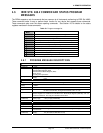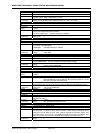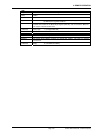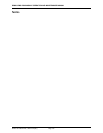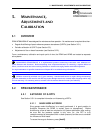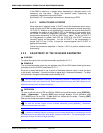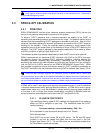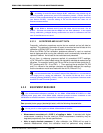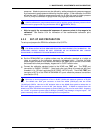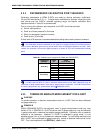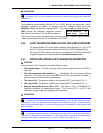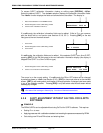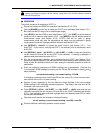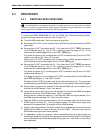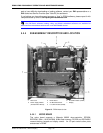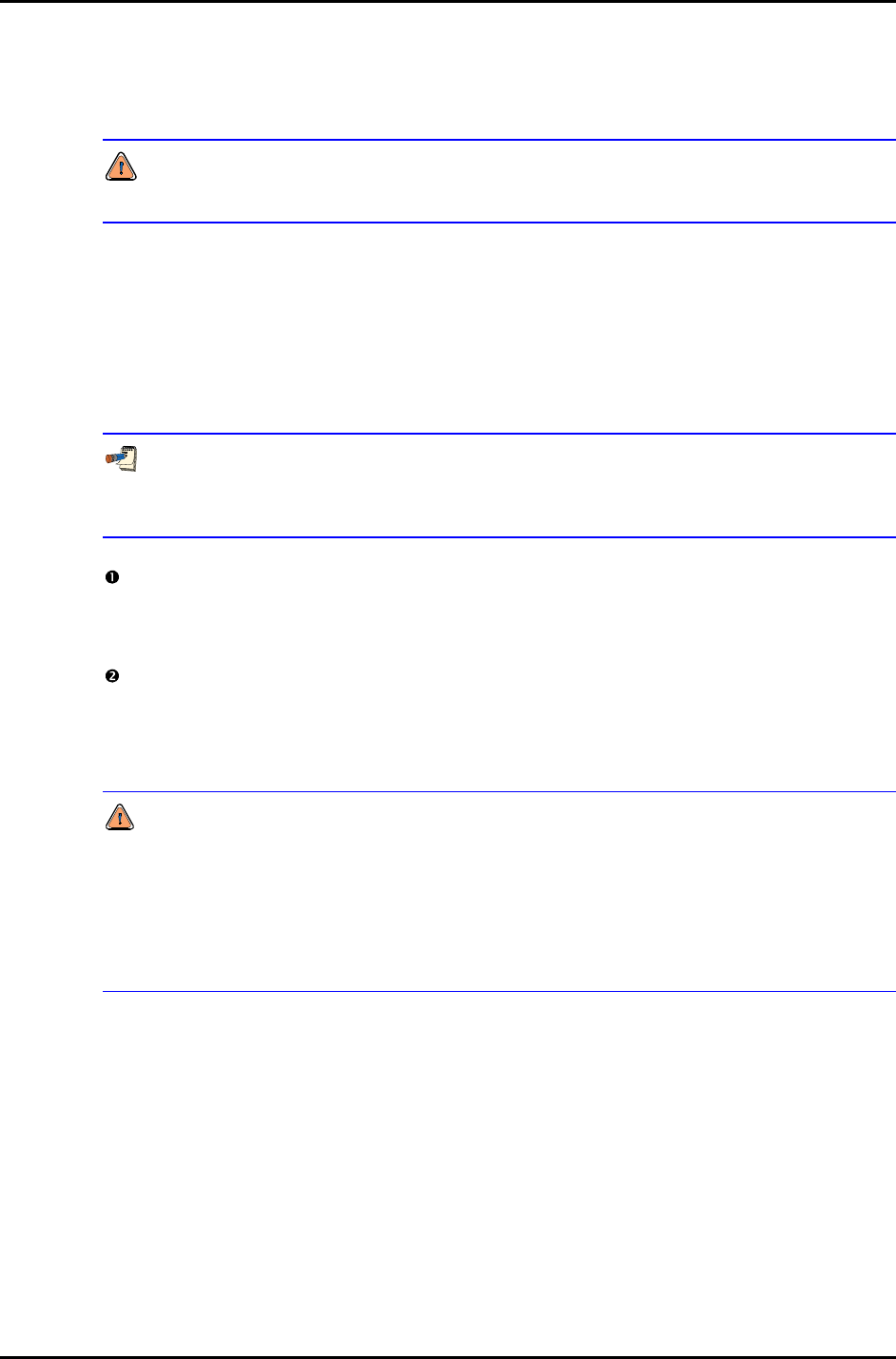
5. MAINTENANCE, ADJUSTMENTS AND CALIBRATIONS
Page 109 © 2007 DH Instruments, a Fluke Company
pressures. Absolute pressures are be defined by adding atmospheric pressure measured
by a barometer to gauge pressure defined by the piston gauge. If, after calibration, the RPM4
will not be used in absolute measurement mode (as is often the case for higher pressure
Q-RPTs) it may be calibrated in gauge mode using a gauge pressure standard.
Q-RPTs calibrated in gauge measurement mode by applying gauge reference pressure values
should be used in gauge mode only (see Sections 3.3.3, PRINCIPLE, 5.3.5).
• Able to supply the recommended sequence of pressure points in the range to be
calibrated: See Section 5.3.4 for information on the recommended calibration point
sequence.
5.3.3 SET-UP AND PREPARATION
To set-up and prepare the RPM4 for calibration of its Q-RPTs:
THE RPM4 SHOULD NOT BE REMOVED FROM THE HPMS BRACKET FOR CALIBRATION. THE
RPM4/HPMS SHOULD ALWAYS BE KEPT TOGETHER AS AN INTEGRATED UNIT UNLESS
DISASSEMBLY IS REQUIRED FOR MAINTENANCE OR REPAIR.
Set the RPM4/HPMS on a stable surface near the calibration standard at a height as
close as possible to the calibration standard’s reference height. Consider the high
pressure gas connection that needs to be made to the TEST port on the rear of the HPMS
and access to the front panel display, keypad and Lo Q-RPT isolation valve.
Connect the calibration standard output to the HPMS rear TEST port. The TEST port
connection is DH500 F (DH500 F: gland and collar type fitting for coned and left hand
threaded 1/4 in. OD tube, equivalent to AE F250C, HIP HF4, etc.). The HPMS TEST port
connects to BOTH of the RPM4 A70M/A20M-AF quartz reference pressure transducers
(see Section 3.2.5).
Take care to avoid overpressure of the Lo Q-RPT (A20M with maximum pressure of 3 000
psi). The HPMS rear TEST port connects to both the A20M (3 000 psi) and the A70M
(10 000 psi) Q-RPTs. Use the Lo RPT Isolation Valve on the HPMS front panel to isolate the Lo
RPT when applying pressure to the Hi RPT (see Section 3.2.5). If RPM4 is removed from the
HPMS, note that the RPM4 has separate Lo and Hi TEST(+) ports, one for each Q-RPT. Exposing
the Lo RPT to pressure greater than 3 600 psi (24 MPa) may damage it beyond repair. The
product warranty does not cover Q-RPT damage due to overpressure.



